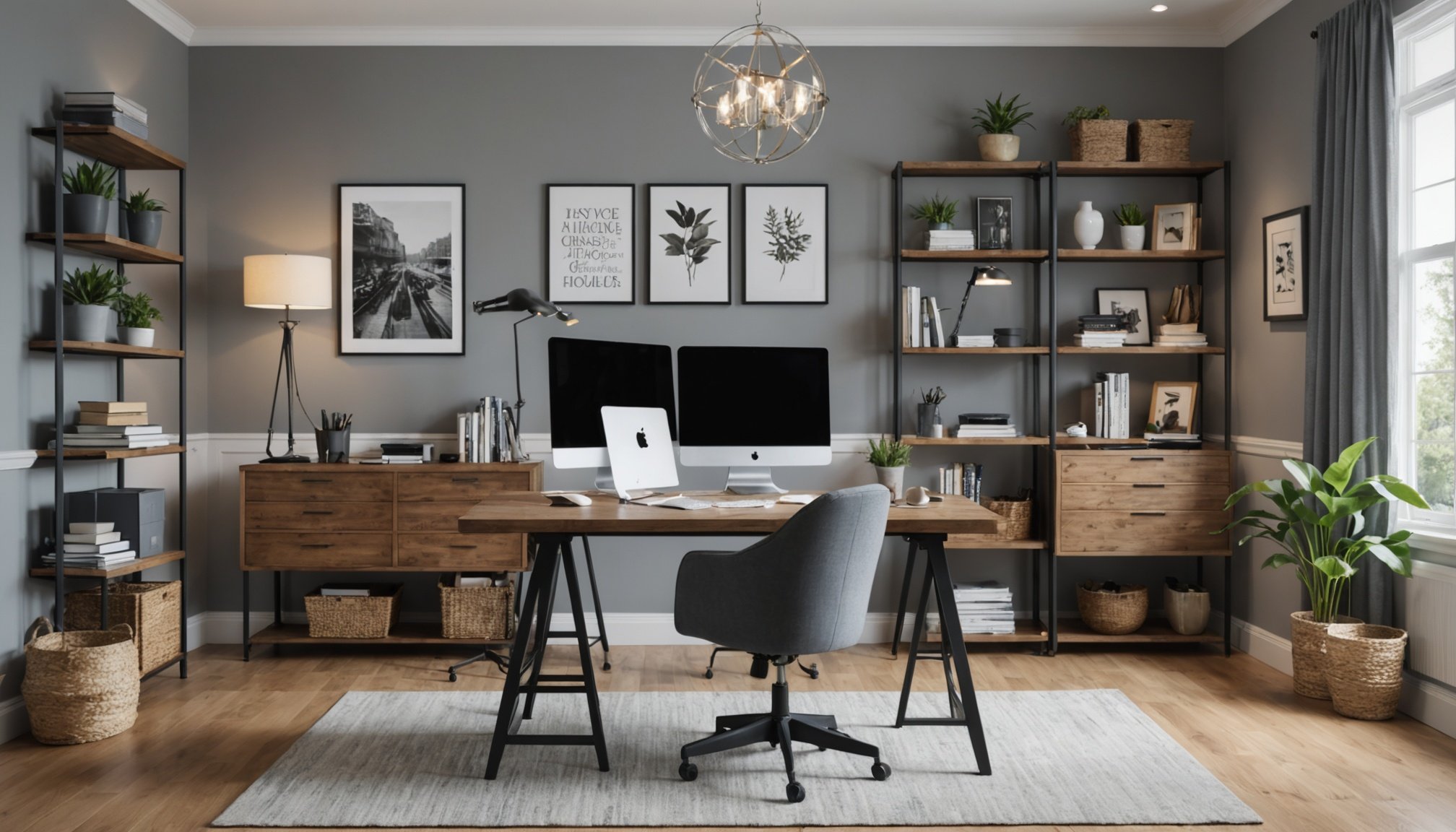Essential Tips for Setting Up Your Work-From-Home Space
Creating an effective work-from-home environment starts with selecting the right location within your home. Ideally, choose a quiet area with minimal distractions, good natural light, and enough space to accommodate your remote work setup comfortably. A dedicated corner or separate room can make a significant difference in maintaining focus and separating work from personal life.
Next, prioritise workspace organization to promote productivity. Declutter your desk and surroundings by removing unnecessary items that could interrupt your flow. Use storage solutions like shelves or drawers to keep essential tools handy yet out of sight. This clean, organised environment supports mental clarity and helps reduce stress during busy work periods.
This might interest you : How is Remote Work Impacting the Housing Market in the UK?
Personalising your work-from-home environment enhances comfort and creativity. Add elements like plants, artwork, or a favourite mug to make your space inviting. Ergonomic furniture, such as adjustable chairs or desks, can prevent physical strain and keep you comfortable throughout the day. A tailored workspace encourages motivation and a positive mindset, which are crucial for sustaining remote work success.
Ergonomics and Comfort for Remote Work
Creating a comfortable, ergonomic workspace is essential for maintaining productivity and health during remote work. Investing in ergonomic office furniture like chairs and desks designed to support a natural posture reduces strain and helps prevent long-term discomfort.
Additional reading : How can you incorporate smart technology into UK home security?
An ideal ergonomic chair features adjustable height, lumbar support, and armrests to keep your spine aligned. Combine this with an adjustable desk that allows alternating between sitting and standing positions to enhance circulation and reduce fatigue. Accessories such as footrests, monitor risers, and keyboard trays can further improve comfort by promoting correct positioning.
Proper posture plays a crucial role in minimizing strain. Position your monitor at eye level, keep feet flat on the ground, and ensure elbows rest at a 90-degree angle when typing. This arrangement prevents slouching and repetitive stress injuries, common complaints among remote workers.
Addressing work-from-home health through ergonomics also means recognizing the signs of discomfort early. Persistent neck or back pain signals that your workstation might need adjustment. Regular breaks to stretch and move help reduce muscle tension and maintain overall well-being.
By consciously prioritizing ergonomic setups, you can dramatically improve comfort, reduce fatigue, and enhance both focus and long-term health while working remotely.
Tech Essentials for a Home Office
Creating an efficient home office starts with technology needs that support productivity and connectivity. A fast, reliable internet connection is fundamental. It ensures smooth video calls, quick file sharing, and uninterrupted access to cloud services. Pair this with a capable computer—whether a desktop or laptop—that meets your work software requirements, such as video conferencing apps or design programs.
In addition to hardware, selecting the right communication tools is crucial for remote collaboration. Headsets with noise cancellation, webcams with clear resolution, and microphones that capture voice accurately enhance virtual meetings. Productivity apps, including task managers and calendar software, help organize your workflow and keep deadlines visible.
Security cannot be overlooked. Implementing backup solutions like cloud storage or external drives protects your data from accidental loss. Cybersecurity practices, such as using strong, unique passwords and enabling two-factor authentication, safeguard sensitive information from unauthorized access. Regular software updates also prevent vulnerabilities.
By focusing on these home office tech essentials, you ensure a setup equipped for effective remote work that combines convenience, protection, and efficiency throughout your workday.
Minimising Distractions and Enhancing Focus
In today’s home environment, minimising distractions is key to maintaining productivity. Common distractions range from smartphone notifications to household noise, which can fragment attention and reduce efficiency. Recognising these interruptions is the first step toward controlling them.
Effective focus strategies include setting specific work zones free from non-essential devices and communicating boundaries to household members during work hours. Using productivity tools such as website blockers or focus timers can help maintain sustained concentration by limiting access to distracting content and structuring work periods.
Time management is critical; a popular technique is the Pomodoro method, where focused work intervals are followed by short breaks. This helps prevent burnout while keeping the mind fresh. Additionally, creating a prioritized task list at the start of each day can align activities with goals, reducing decision fatigue and enhancing motivation.
For those struggling to maintain focus despite these tools, mindfulness practices can enhance awareness of wandering attention, allowing for quicker redirection back to tasks. Combining these productivity tools and focus strategies provides a comprehensive approach to sustaining concentration while working from home.
Optimising Lighting and Workspace Ambience
Lighting plays a crucial role in shaping your home office ambience and directly impacts productivity improvement. Natural light is generally the best source for a workspace lighting setup, as it helps regulate your circadian rhythm, boost mood, and keep you alert throughout the day. Position your workspace near a window to maximise access to daylight, but be mindful of glare on screens.
When natural light isn’t an option or during evening hours, carefully chosen artificial lighting can maintain a productive environment. Use soft, diffused lighting to minimise harsh shadows and reduce eye strain. Adjustable desk lamps with warm, white bulbs around 4000K to 5000K provide bright yet gentle illumination, helping you stay focused without discomfort.
Beyond lighting intensity, consider the overall ambience by integrating elements like calming colours and minimal clutter to create a space that supports concentration and motivation. A well-lit room that mimics natural daylight enhances your alertness, reducing fatigue and making it easier to stay engaged in tasks.
Fine-tuning your workspace lighting with both natural and artificial sources allows for a balanced atmosphere, promoting better mental clarity and sustained productivity improvement. Investing a bit of effort here yields significant benefits to your workday comfort and efficiency.
Balancing Work and Life While Working From Home
Maintaining a work-life balance during remote work is essential for sustaining mental well-being. Without clear boundaries, it can be challenging to separate professional responsibilities from personal time. Establishing specific work hours and creating a designated workspace helps signal the start and end of the workday. This physical and temporal separation protects personal life from being overwhelmed by work tasks.
Developing daily routines is another crucial strategy to support psychological well-being. Consistent start and finish times, scheduled breaks, and rituals such as morning exercise or meditation can boost focus and reduce burnout. These habits provide structure and a sense of normalcy, even in a home environment.
Taking effective breaks also supports mental health during remote work. Stepping away from screens to stretch, go for a short walk, or practice deep breathing helps to manage stress and improve concentration. Avoiding back-to-back meetings and setting reminders to pause can prevent fatigue.
Encouraging remote workers to prioritize these approaches fosters a sustainable balance between work and personal well-being. By actively managing time and boundaries, remote work becomes a more manageable and rewarding experience.









